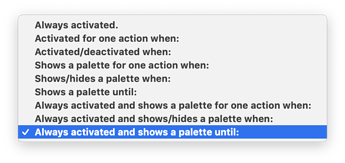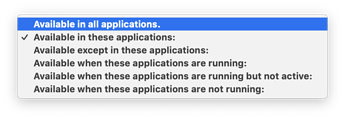I think it’s cool and useful. I’ve tried to use KM with or without 1Password to get one click access to websites and found it too difficult.
It occurs to me without significant time with Butler that Butler has been carefully sculpted to provide access to capabilities in a way that KM has not and like KM, there is a significant time requirement to learn the ways of Butler.
It seems each program’s author reinvents the wheel to a degree, shaping it into their image of how they like things to look and work while also creating pathways to access their work. I think these access/service roads become increasingly important to gain initial critical acceptance to get a project off the ground and then even more so to gain a wider and wider audience depending on the ambitions of the authors.
It’s like so much of Art’s expression showing up in life. Each expression contributes to the others and we’re all the better for it and have greater possibilities arising from each’s artist’s contribution.
Without a good deal of time spent with Butler I don’t consider what I think about comparing Bulter and KM to be useful in the way that others have compared KM to other app as in this well had discussion: Using and Comparing LaunchBar (LB) with Alfred and other Apps.
I think (and boy is this highly specific just to me) that the docklet itself is too intrusive for the functionality it provides, AND it’s useful to have a dedicated always onscreen available space for triggers. I tried an always onscreen “universal/global” palette with KM’s palettes and resized and relocated all the auto window actions to accommodate this but abandoned the idea.
In addition to functionality, as long as I’m not in an emergency situation, I’m moved to having aesthetically pleasing stuff on the screen as well and this docklet is one ugly duckling (sorry and again only in my one opinion). To soften this slightly, I’d say that it’s a work in progress and has the potential with enough loving support and time to be beautiful as well as useful, but that’s not this day.
As I suggested previously to which you haven’t yet referenced, KM can also have an always onscreen palette as well AND the KM palettes are pretty customizable. I’d like to see significantly more customization (see Custom Palette Style Colors?) and as it currently is it’s very workable.
Of course beauty is in the nervous system, experience, and choices of the beholder and mine is only one in around eight billion, so as important as it is to me, I’m clear it doesn’t count for much.  /
/

Again, I enjoy and appreciate all your considerable work on interface simplification and utility. Simplification is a beautiful thing.
I’ll continue to follow your work with interest! Please keep it up and keep sharing!



 /
/
